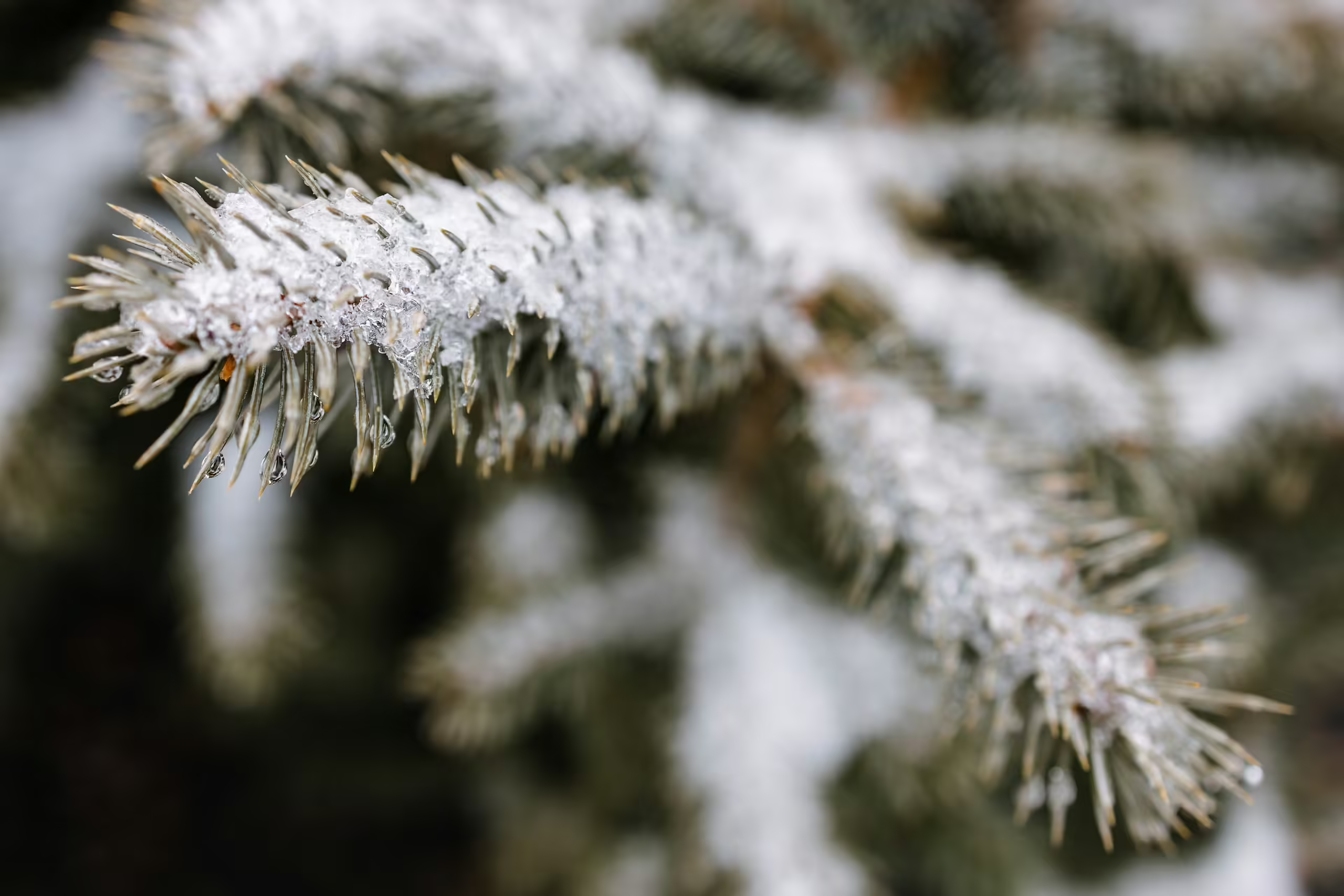
Written by s • Protecting Your Hedges In Winter
If you live in colder parts of the country, where winter is a time of snow and ice, fall and early winter are good times to be thinking about protecting your hedges from the potential ravages of that cold.
Most of us grow evergreens as hedges, for year round privacy, and among the most popular plants to use are Thuja Green Giant, Leyland Cypress, Emerald Green Arborvitae, or Nellie Stevens Holly. Of these, the toughest in winter is Emerald Green and this should be the first choice for very cold areas. If you are just starting a hedge, make sure you choose something that grows comfortably in your hardiness zone. You can find out your zone by entering your zip code into this US Department of Agriculture zone finder.
The most common damage seem on evergreens is brown foliage, leaving the hedge unsightly until the new growth appears. Since spring is when we tentatively step out into the garden to begin the new outdoor year, it would be nice if our hedges were more attractive at that time. You can adopt some simple strategies that greatly increase the chances of your evergreens looking as fresh in spring as they did in fall.
Hedge Fertilizers for Fall
There are two reasons why foliage can brown in winter. One is seen when growth continues right into the cold weather, and soft young shoots are not prepared for the cold. You can avoided this by following the right kind of fertilizer program. Most hedge fertilizers contain a lot of nitrogen, which stimulates fresh green foliage and is just what your hedge needs in spring and early summer. However, remember to stop feeding by mid-August or mid-July if you use a slow-release form, so that the growth slows down and is tougher by fall. If your hedge is along a lawn, the food you give your grass can also stimulate your hedge, so don’t fertilize the lawn within 3 feet of your hedge after mid-summer either.
If you visit your local garden centre in early fall you can pick-up some fall fertilizer for hedges and evergreens. Look for a high last number, which is potassium, a nutrient known to thicken cells and make them more resistant not only to cold, but to pests and diseases too. Some of these fertilizers also contain a special form of nitrogen that lies dormant until spring, saving you that early spring feed and giving you top results.
Don’t Forget the Water
The second reason foliage on evergreens turns brown in winter is desiccation – lack of water. This might seem strange at first, because winter is full of snow and freezing rain, but once the ground freezes, it is much more difficult for plants to take up the water they need – like sucking on a very cold ice-cube – so the foliage dries and browns.
Two strategies will reduce or eliminate this kind of damage. First, really soak your hedge in mid-fall, and again after all the leaves have fallen but before the ground begins to freeze. The bigger amount of water will slow the freezing of the soil. As well, spreading mulch over the root zone will keep the soil warmer and stop it freezing so hard or so deep. Both of these strategies leave more free water available for your hedge, and reduce or eliminate this kind of winter damage.
Hold the Salt
The worse enemy of your hedge is salt used to melt ice. This dissolves in the soil water and literally sucks the water right out of your plants, leaving them crisp and brown. This is a much bigger enemy than the cold, and the main reason for hedges browning and dying in cold areas. The same thing will happen if salt gets directly onto the leaves of your hedge. Alternatives like urea are just as bad, so avoid any materials that will dissolve in water.
If you have a hedge along your driveway, careful and complete plowing, followed by a good sprinkling of sand or kitty litter for traction, is a much better option for your plants. If your hedge is along a road or highway, then the best defense is to erect a burlap screen on T-bars a foot or more from the hedge, and a foot higher than your hedge. This will catch the salt that is thrown up, or drifts from the road in the wind, holding it safely off the foliage until spring rain carries it away.
Whatever you do, following these simple steps will mean your hedge emerges from winter looking almost as good as when it went in – a great start to another season in the garden.





